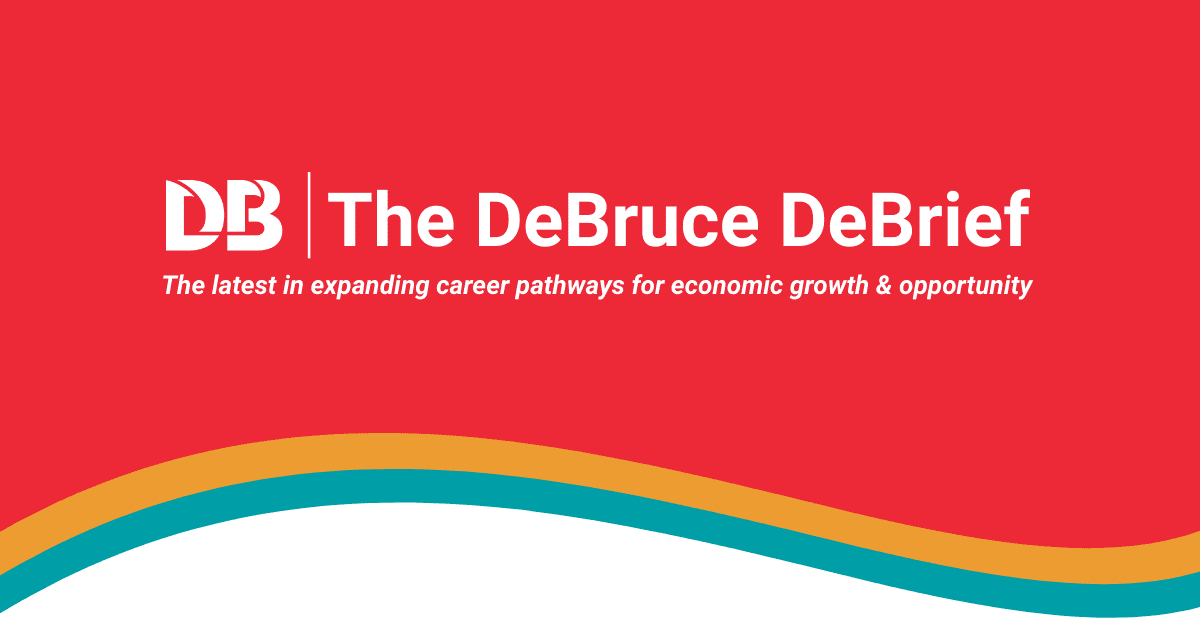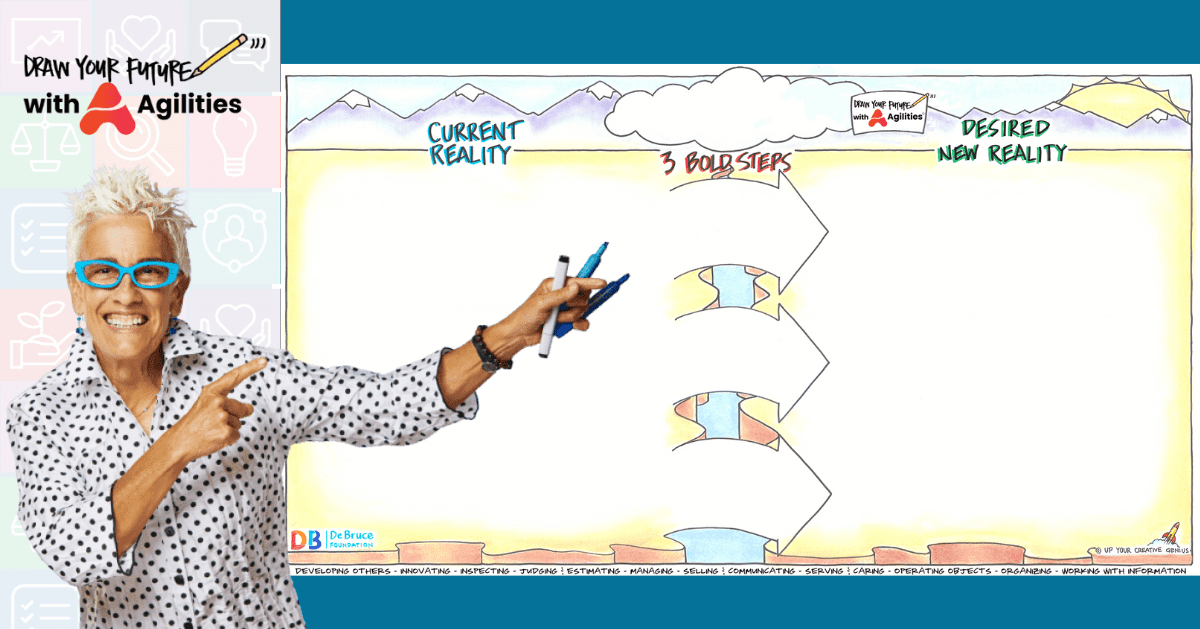Link copied to clipboard
By Jessica Asbury, Your Fellow Educator and Agilities Fangirl (and Elementary Coordinator of Real World Learning at Piper School District)
Let’s start with something simple: we all just want to be seen. Not like “please hand me the microphone” seen. More like, “someone noticed the thing I’m good at and it made my day” seen. Our students are no different.
That’s what I love about the Agilities framework from The DeBruce Foundation. It gives kids a language for who they are, not who we think they are. That’s a big difference. And when you put Agilities into your classroom, something pretty magical happens. The “quiet kid” suddenly owns that they’re strong in Working with Information and starts leading the data side of a group project. The student who can’t sit still? Turns out they’ve got Operating Objects and Innovating all over their profile, and they finally get to do something meaningful with their energy. And teachers? We get to see our students in ways we maybe hadn’t before.
Personality Quizzes… But With Career Potential
We all love a good identity shortcut, right? I have spent embarrassingly alarming amounts of time analyzing my Enneagram number, my top five strengths, and my Hogwarts house (Hufflepuff with Slytherin rising, thank you very much)! Why? Because it’s oddly comforting to see yourself reflected back with a label that fits.
The Agilities framework is kind of like that, but instead of telling you what color your aura is or what type of bread you’d be in a Buzzfeed quiz, it helps students see how their natural strengths connect to actual careers. You know… the real world, which is convenient, considering we’re in the business of preparing students to be future ready.
In my district, we use Agilities with everything. Group projects? Sorted by Agility strengths. Indoor recess? We’ve got “Agility Kits” where kids explore through play. Guest speakers? We prep them to talk about their own Agilities and how they use them in their careers. Even big school-wide events are sprinkled with Agility language so that students constantly hear the message: your strengths matter, and you belong everywhere.
From Classroom Confidence to Career Readiness
Here’s where it gets even better. Agilities don’t just help students understand themselves—they’re grounded in workforce research. The same traits we’re helping students name and explore are the ones employers are looking for. So when a third grader identifies that they’re strong in Serving & Caring or Managing, you’re also planting the seeds for healthcare, leadership, or service-driven careers down the line.
In other words, it’s not a trend. It’s a track.
Once students know their strengths, they’re better at picking roles, self-reflecting, and even navigating conflicts. I don’t have to micromanage every team dynamic—I just ask, “Did you lean into your Agilities today?” and the kids know what I mean.
One day during recess, I was supervising the playground when a disagreement broke out among a group of friends. Nothing unusual, just one of those tricky moments where feelings are high and solutions are nowhere in sight. I watched for a while as it unfolded, waiting to see if they could work through it. But one student in particular was struggling to find a way forward.
Eventually, I stepped in, not to fix it, but to guide. I simply asked, “Hey, remind me, what’s your top Agility?”
Without hesitation, the student stood tall and answered, “Serving & Caring.”
I nodded and said, “I wonder what that might look like in this moment.”
That was all it took. I watched as the student walked back into the conflict, the same kid, but with a whole new posture. Their tone softened, their words changed, and they started listening instead of reacting. It wasn’t about “getting in trouble” or “being told what to do.” It was about living up to the version of themselves they were proud of.
That’s the thing about Agilities. They don’t just tell students what they can do. They give them a sense of who they are and who they want to be.
It’s not a big initiative or something you have to overhaul your schedule for. Agilities can be quietly woven into what you’re already doing, and it quickly becomes one of the most multidisciplinary tools in your classroom. It doesn’t take much time, but the shifts in how students see themselves (and each other) happen fast.
A Few Ideas to Get You Started
- Set the vibe early. Have students explore their Agilities at the start of the year. Let them self-proclaim their strengths and work areas, or in older grades, try the Agile Work Profiler, but create something tangible: strength profiles in online portfolios or desk badges for younger learners that are a visual reminder to themselves and others. Instant ownership!
- Bring it into projects. Let students pick roles based on Agilities. Watch your “I hate group work” kids suddenly light up.
- Invite adults in. Whether it’s a custodian or a parent who owns a business, ask guests to share their top Agilities before talking to the class. It instantly connects them to students on a human level.
- Make it your language. Instead of saying “good job,” try “you were using your Inspecting Agility there—great catch!” That phrasing sticks.
Final Thought from One Teacher to Another
At the end of the day, we’re all just trying to create spaces where kids feel seen. Agilities give us a tool to do that with intention and with a ton of flexibility. You don’t have to have a fancy program or dedicated bulletin board. You just need to be willing to see your students for who they already are, and help them build from there.
Your students will grow from it. Relationships will grow from it. You’ll grow from it. And maybe, just maybe, someone will figure out they’re a Managing/Innovating/Operating Objects kind of person… and suddenly, their whole school experience makes more sense. Let’s think of Agilities as your classroom’s Sorting Hat—helping every student find where they shine, no spells required or 2am Buzzfeed Quizzes!
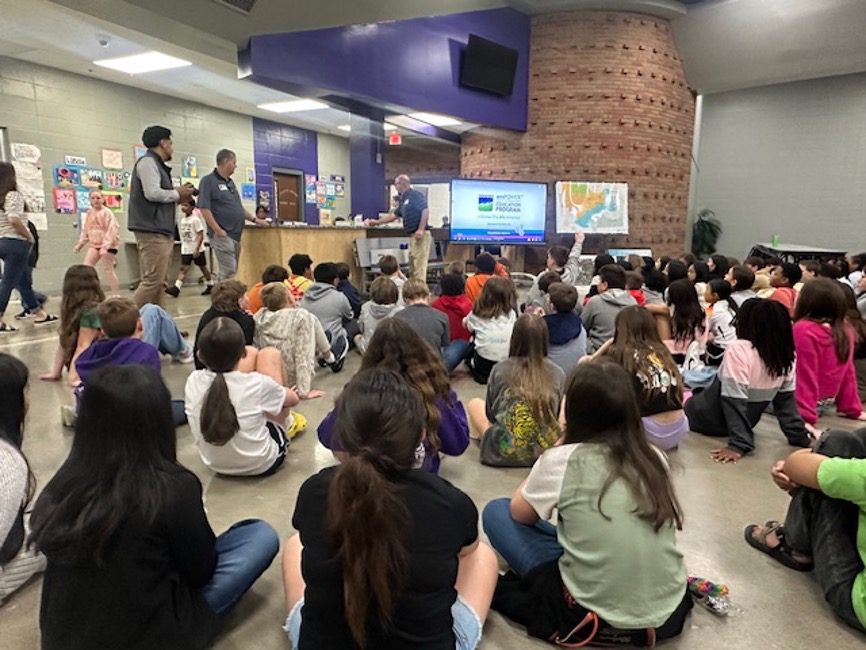
Client Connected Project with BPU in fifth grade on Water Conservation- partners shared the Agilities important for multiple roles in their organization
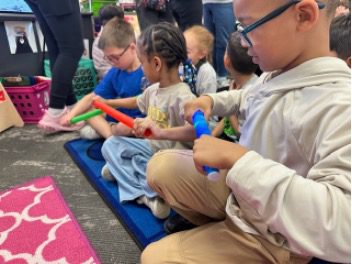
First graders using their Innovating and Inspecting Agilities to create fidget tools to help struggling students
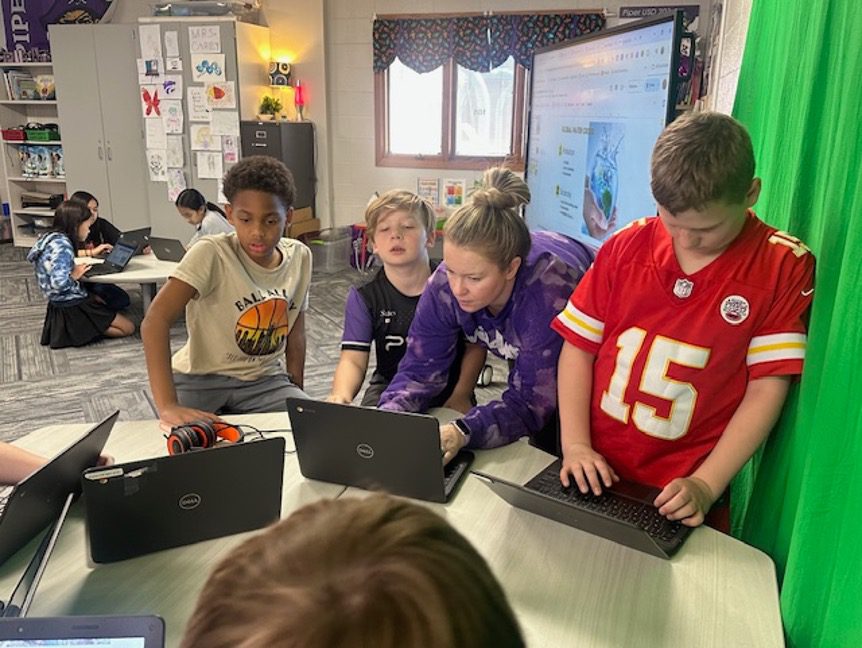
Fourth-grade students researching possible future careers while focusing on self-identified strengths and growth points within Agilities
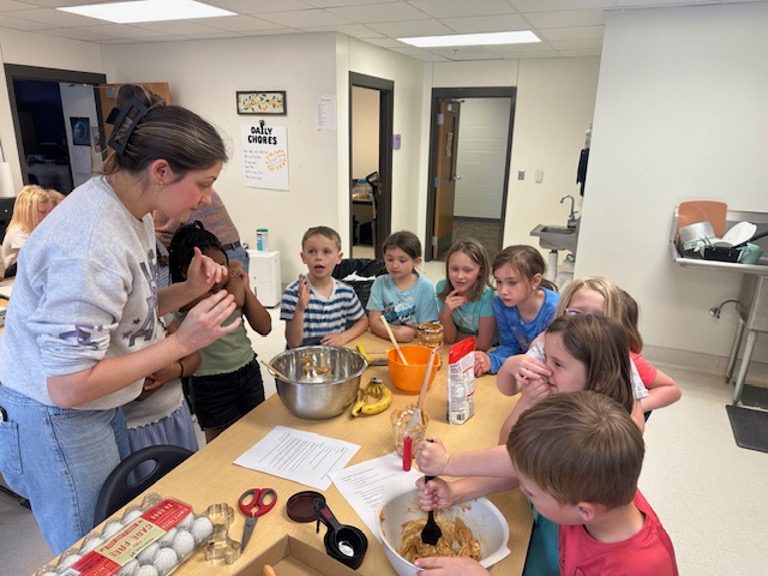
Second graders in after-school cooking club focus on Operating Objects and Managing for their dog treat recipe
Interested in using the Agilities with your students? Learn more about The DeBruce Foundation’s K-12 Career Literacy Resources.
